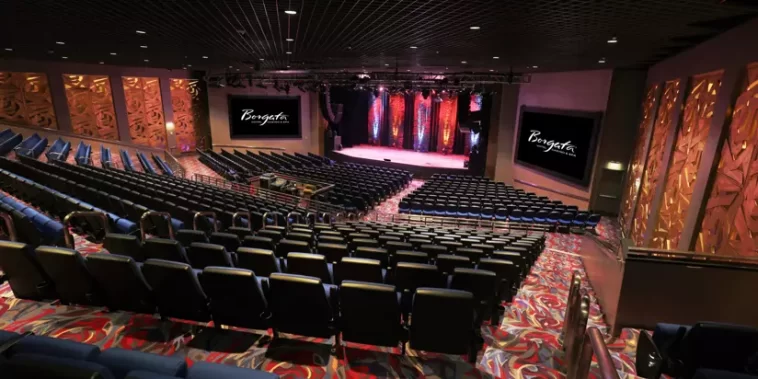Rui Huang is a figure to watch if you’re interested in sports architecture and avant-garde concepts. Renowned for premier projects such as the training facility for the Los Angeles Chargers and the Reno Arena, Huang is revolutionizing the design expectations of sports facilities. His pioneering strategies, grounded in advanced technology like parametric design and virtual reality, are transforming the industry. Leveraging his role as a design technology expert, Huang harnesses these technologies to navigate multifaceted forms and craft immersive architectural landscapes.
His dedication to environmental sustainability and an approach driven by technology is establishing new benchmarks within industry. Over time, Huang has seen significant evolution in his design philosophy. He shifted from a myopic focus on pure functionality to an approach that is an elegant blend of form, function, and sustainability. His broad spectrum of experience, especially in sports architecture, has highlighted the need for creating spaces that are visually enticing and offer immersive experiences.
Each design comes with its unique hurdles and demands, emphasizing how working on varied projects broadened his understanding of blending diverse design components. Huang’s adoption of parametric design has proven revolutionary. It allows him to investigate complex geometrical designs and optimize them for both aesthetic aspects and environmental performance. This forward-thinking method ensures his projects are not just functional, but also respect the environment.
In his ventures, Huang has focused on the use of sustainable materials and energy-efficient systems, reflecting his commitment to creating vibrant, inclusive environments that have beneficial impacts on the surrounding community. The underlying principle of his philosophy is clear – architecture should serve both as an inspiration and cater efficiently to the practical requirements of its users.
During his initial sports architecture project that involved designing a massive soccer stadium with 100,000 seats, Huang invented the ‘Seating Bowl Magic Box’ out of sheer necessity. Tasked with re-designing the entire seating bowl design on a weekly schedule, Huang soon recognized the traditional design methods were inadequate. With his vast background in stadium and arena design, Huang developed a tool that met professional needs while simplifying complex operations. This tool enables a single designer to handle multiple tasks easily.
His tool was developed with user-friendliness in mind, making sophisticated design accessible to all, even those without prior scripting experience. Huang’s approach to sports architecture, marked by his proficiency with cutting-edge technology like parametric design, lets him quickly explore complex forms and optimize design details, ensuring every project surpasses functionality and aesthetic goals. His design methodology is grounded in efficiency and accuracy, underlining how advanced tools aid in the rapid creation of multiple design variations, and real-time assessment to figure out the most effective solutions.
Huang utilizes high-end visualizations, animations, and virtual reality (VR) to craft immersive experiences for everyone involved in the project. This enhances communication, facilitates collaboration, and ensures the end designs align optimally with the client’s vision. The capacity to perform real-time analysis and present multiple designs swiftly is particularly beneficial in the rapidly evolving field of sports architecture, where accuracy and speed hold cardinal significance.
Huang’s method, driven by technology, not only produces visually splendid designs but also makes them functionally solid and eco-friendly, setting a fresh industry benchmark. For Huang, maintaining equilibrium between unique design ideology and conventional architectural practice has been a significant hurdle. His approach emphasizes a blend of form, function, and sustainability, which often diverges from traditional methods more fixated on functionality and cost-efficiency.
This deviation often leads to contrasting viewpoints within the team, particularly around the introduction of new or unorthodox methodologies. To tackle such challenges, Huang stresses open communication and compelling demonstrations using animations, comprehensive visualizations, and other visual tools to depict the potentials and benefits of his design approach. By nurturing an encompassing and collaborative ambiance, Huang ensures all team members feel valued and their inputs heard.
His inclusive approach facilitates constructive dialogues that help incorporate his design ideologies into the collective team vision. Through this process, Huang successfully fuses traditional practices with groundbreaking ideas, churning out designs that are diverse and dynamic.
To ensure his design techniques continue to be at the forefront, Huang emphasizes the importance of continuous learning and exploration. In a fluid field such as architecture, staying current is vital as technologies, materials, and methodologies keep evolving. Huang keeps pace with the latest trends by attending industry conferences, participating in workshops, and remaining updated with ongoing research. This proactive approach allows him to infuse his work with the most innovative ideas, reinforcing his commitment to maintaining relevancy and innovation in his projects.
Huang is of the conviction that genuine innovation stems from openness to exploring fresh ideas and challenging conventional norms. Experimenting with different materials, construction methods, and digital tools lets him unearth distinctive solutions that challenge the conventional norms of architecture. Critical self-reflection and review are integral to his work process. Post each project, Huang meticulously analyzes what worked and which areas could use enhancement.
His innovation of a precision tool has had a transformative impact on sports architecture, particularly in designing complex stadiums and arenas. Capitalizing on a code-driven approach, this tool dramatically enhances the speed, quality, and precision of the design process. This tool has been especially advantageous in optimizing seating arrangements, sightlines, and structural components to deliver meticulous detailing in functionality and user experience.
Looking ahead, Huang imagines the future of sports architecture to be one that prioritizes fan engagement and the seamless integration of advanced technologies. As audiences increasingly demand immersive and interactive experiences, sports facilities design will need to evolve to provide seamless connectivity, personalized services, and interactive features that surpass traditional spectator environments. Tech innovations like augmented reality, virtual reality, and smart systems will play a pivotal role in reshaping fan interactions with sports venues. Huang’s contributions offer a striking balance of technology and creativity in sports architecture.


